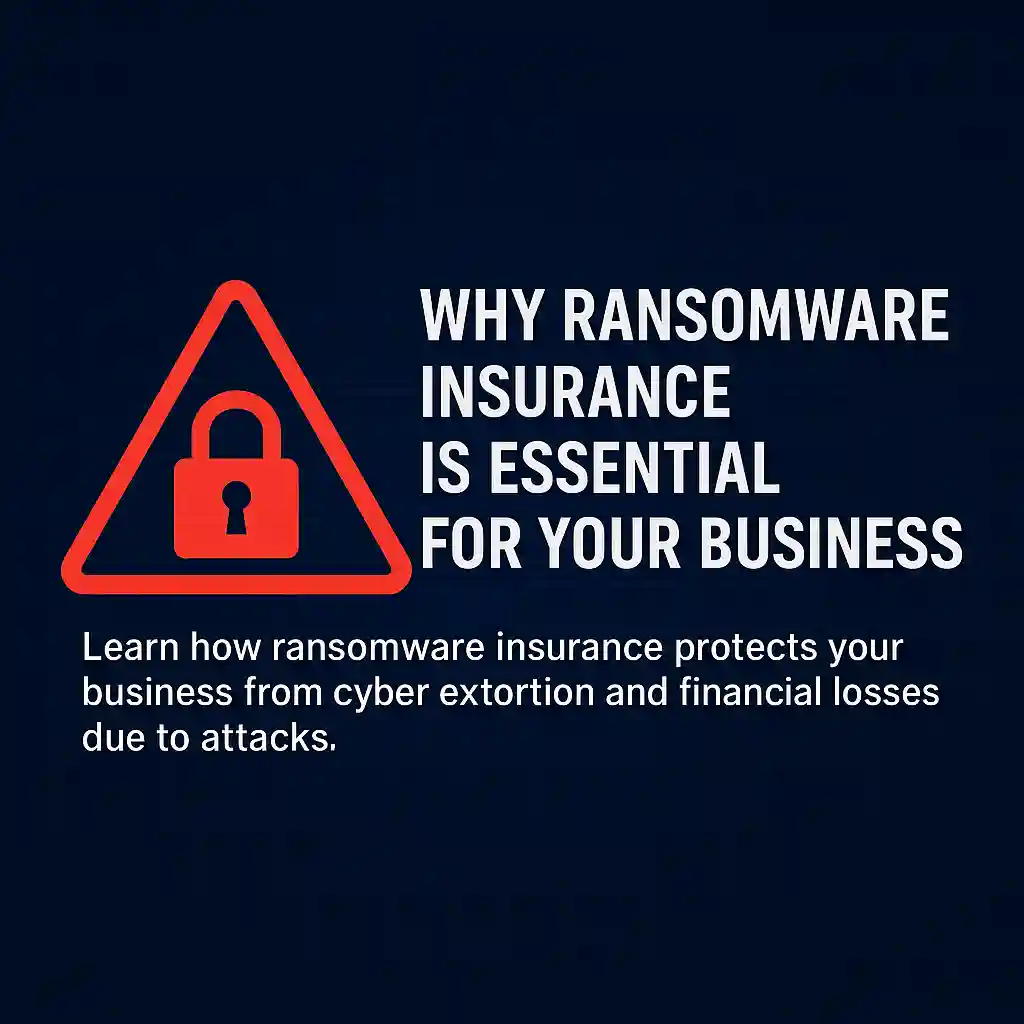Cyber Security

Why Ransomware Insurance Is Essential for Your Business
In today’s hyper-connected world, ransomware attacks have become one of the most dangerous cybersecurity threats to businesses of all sizes. From large corporations to small startups, no one is safe from cybercriminals targeting valuable data and demanding hefty ransoms. In 2025, investing in ransomware insurance isn’t just smart — it’s essential.
This guide explains what ransomware insurance is, why it’s crucial for modern businesses, and how it can protect your organization against financial, operational, and reputational damage.
What Is Ransomware?
Ransomware is a type of malicious software that encrypts a victim's data, locking them out of their systems until a ransom is paid to the attacker. These attacks often target:
-
Financial institutions
-
Healthcare systems
-
Government agencies
-
Small and medium businesses
Once infected, companies face downtime, data loss, and public trust issues, often costing them millions.
What Is Ransomware Insurance?
Ransomware insurance is a type of cyber liability insurance that covers the costs associated with a ransomware attack. These policies typically cover:
-
Ransom payments (if legally permitted)
-
Data restoration expenses
-
Business interruption losses
-
Legal and regulatory penalties
-
Public relations and reputation management
-
Incident response and forensic investigation costs
Why Ransomware Insurance Is Crucial in 2025
Cybercriminals are getting smarter.
With attacks increasing by over 60% in 2024 alone, ransomware insurance has become a vital part of a company’s cybersecurity strategy.
Key reasons your business needs ransomware insurance:
✅ Financial Protection
Recovering from a ransomware attack can cost businesses anywhere between $500,000 to $5 million. Insurance helps cover these unexpected expenses without crippling your cash flow.
✅ Business Continuity
Insurance provides access to expert incident response teams, helping your business recover quickly, minimizing downtime, and reducing long-term losses.
✅ Legal Compliance
Many industries require businesses to have incident response and insurance plans as part of regulatory compliance (GDPR, HIPAA, PCI DSS).
✅ Reputation Management
A data breach can damage public trust. Ransomware insurance often includes public relations services to manage the media fallout and protect your brand.
What Does Ransomware Insurance Typically Cover?
| Coverage | Included in Policy? |
|---|---|
| Ransom Payment (if legal) | ✅ |
| Data Recovery & System Restoration | ✅ |
| Business Interruption Losses | ✅ |
| Legal Fees & Regulatory Fines | ✅ |
| Public Relations & Reputation Damage | ✅ |
| Incident Response & Forensic Analysis | ✅ |
How to Choose the Right Ransomware Insurance Policy
When selecting a ransomware insurance policy for your business:
-
Assess your risk profile: Industry, size, and data sensitivity
-
Understand coverage limits and exclusions
-
Check for legal restrictions on ransom payments in your region
-
Ensure access to incident response services is included
-
Review claim procedures and payout timelines
FAQs
Q: Does ransomware insurance always pay the ransom?
A: Not always. Payments are subject to legal regulations and insurance policy terms. Some countries prohibit ransom payments.
Q: How much does ransomware insurance cost?
A: Premiums typically range from $3,000 to $30,000 annually, depending on company size, industry, and risk exposure.
Q: Is ransomware insurance necessary for small businesses?
A: Yes. Cybercriminals often target small businesses due to weaker security defenses.
Final Thoughts
Ransomware attacks are evolving, becoming more targeted and destructive. Without ransomware insurance, businesses risk facing overwhelming financial and operational damage. In 2025, smart businesses understand that ransomware insurance is no longer optional — it’s essential.
By investing in the right policy, you can safeguard your operations, finances, and brand reputation from the growing threat of ransomware.